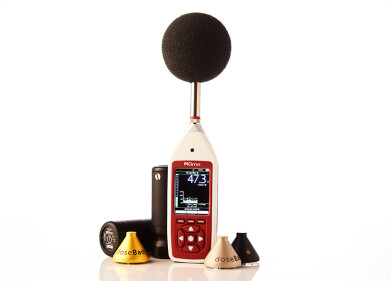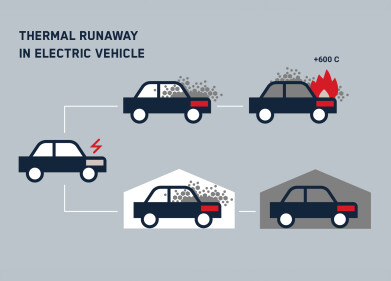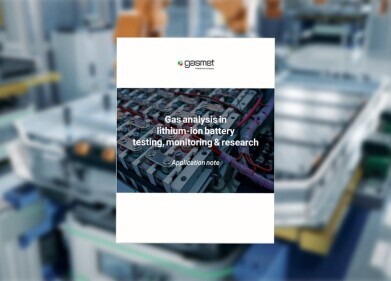Health & safety
What Is Mercury? - Poisoning, Toxicity and Testing
Mar 07 2022
A naturally occurring element in our environment, mercury is unique in a number of different ways. Not only is it the only metal to take liquid form in its natural state, but it’s also one of the most toxic heavy metals on Earth.
Of course, the toxicity of the substance and the health and environmental risks that high concentrations of it bring were not common knowledge for many centuries. This meant that it was a common ingredient in a wide variety of consumer products, medicinal treatments and industrial processes. It has the ability to dissolve other metals and imbue them with certain properties through amalgamation, while it also has among the lowest freezing and boiling points of any heavy metal. All of these attributes have made it a desirable commodity through the years.
Nonetheless, it has been discovered that exposure to high levels of mercury over an alarmingly short period – as well as prolonged exposure to low levels of the element – can have disastrous repercussions for the human body, the animal kingdom and the environment we inhabit. As a result, it has now become a global requirement for companies and individuals handling mercury to implement proper monitoring mechanisms to ensure it remains at safe levels.
This article will take a closer look at the element in more detail, from its various forms and methods of exposure to the health ramifications and monitoring methods used to assess it.
What are the different types of mercury?
Mercury is unique in that it’s the only heavy metal to inhabit a liquid form in its natural state. However, this doesn’t mean that it cannot become converted into a solid or a gas, nor that it has just a single form. Generally speaking, there are three different types of mercury, which are comprised of the following:
- Elemental mercury. This is probably the type of mercury which most people think of when they hear the word, since it has been used in thermometers, barometers and other meteorological instrumentation for decades. Defined as Hg in scientific terms, elemental mercury is the metal in its purest form and is normally a liquid, but can change its physical state.
- Inorganic mercury. This type of mercury is formed when Hg is combined with other elements (except for carbon), such as chlorine, oxygen or sulphur. After reacting with the other element, the Hg is converted into an inorganic mercury compound, like mercuric chloride, mercuric oxide or mercuric sulphide. This generally takes the form of a white crystalline powder.
- Organic mercury. Often considered the most dangerous type of mercury, organic mercury compounds are formed when Hg reacts with carbon. While there are many different organic mercury compounds in our environment, methylmercury is by far the most widespread – and the worst from a human perspective. More on its hazardous properties later.
Where does mercury come from?
Mercury is produced via a variety of natural processes, including volcanic emissions, forest fires, erosion of rocks containing the element and several other phenomena. However, a substantial amount of the mercury in our atmosphere today was emitted from manmade sources. In fact, scientists believe that current concentrations of atmospheric mercury are three times greater than they were prior to the Industrial Revolution.
The chief anthropogenic source of mercury emissions is the mining industry, with the pursuit of precious metals and ores like gold particularly damaging in environmental terms. Mercury is also produced when fuel sources are combusted and their mercury content is released into the atmosphere. Coal is the main offender in this respect, though oil, gas, wood and biomass all contribute to the problem, as well. Waste incinerators, smelting furnaces and other industrial facilities produce mercury emissions, too.
Where is mercury found?
As a naturally occurring substance which can freely change its form, mercury has been cycling through our biosphere for millennia. After being emitted into the atmosphere, it can fall back to the land or the ocean in the form of precipitation, dust or as a result of gravity. This means that it is found in air, water and soil.
It can also contaminate vegetation and become ingested by animals, primarily marine-dwelling ones. Its extremely long half-life means that it does not degrade readily in the environment, while it cannot be excreted by organisms, either. As a result, it can bioaccumulate in the food chain and reach hazardous levels in larger fish, such as sharks, swordfish and tuna. Ultimately, it ends up on our dinner plate and infiltrates the human body – and due to its ability to traverse the placenta, it can infect unborn babies. Today, it’s believed that most people in the world have at least a small concentration of mercury in their bodies.
What is mercury used for?
Despite its persistent nature and damaging side-effects, mercury has been employed in a wide array of applications and processes by mankind. Its use in thermometers and barometers might be the most famous, but it’s also been a key component in cosmetic products, pendulum clocks, electrical switches, fluorescent light bulbs and even dental amalgams.
Indeed, its use in the sphere of medicine is far-reaching; although governments have become more aware of its dangers and limited or banned its use in many medications and treatments, it is still widely favoured in certain parts of the world. What’s more, it’s also a common element in many industrial processes and pieces of equipment, from batteries and semi-conductors to non-ferrous metal production and paper manufacturing.
How are humans exposed to mercury?
By far the most common method of exposure to mercury is ingestion of contaminated seafood. As mentioned above, methylmercury is created when elemental or inorganic mercury combines with carbon, normally in the form of microscopic marine organisms. This damaging substance is then consumed by larger and larger predators, eventually working its way up the food chain until it arrives in the human body.
However, humans can also inhale or absorb mercury through their skin. This can happen if the substance leaks or is spilled from a product containing it or a process utilising it. Indeed, a significant percentage of mercury exposure occurs in workplace environments where the element is present.
What is mercury poisoning?
Although it was not common knowledge for many centuries, we now understand that exposure to mercury is toxic to the human body. If it is allowed to accumulate to harmful levels in our internal systems, it can cause mercury poisoning. The specific effects of this malady vary depending on the type of mercury in question and the method of exposure, but it can cause premature death in extreme cases.
Methylmercury poisoning – known as Minamata disease in high concentrations – can result in skin irritation and impaired speech, hearing and vision, as well as muscular fatigue, reduced motor functions and difficulty in coordination. It can also attack the central nervous system (CNS), the kidneys and the brain, contributing to decreased cognitive function.
Although elemental and inorganic mercury are deemed less dangerous than organic mercury (and methylmercury in particular), they are still capable of causing acute mercury poisoning. The former is largely harmless if ingested or absorbed dermatologically, but can cause grave damage to the lungs very quickly if inhaled. The latter can bring on bouts of vomiting, diarrhoea and irritation to the digestive system when eaten, as well as renal and brain damage when the patient is exposed to larger concentrations.
How can we monitor for mercury in our environment?
Because of the above health risks, it’s imperative that we regularly check our air, soil and water for mercury concentrations so as to minimise the risk of exposure. Meanwhile, mercury can also have detrimental effects on biodiversity in general, with animals exposed to similar risks as humans and both soil and vegetation absorbing the element and becoming contaminated in the process.
As our knowledge about mercury’s toxicity has grown, legislation over the need to implement accurate monitoring protocols and equipment has become commonplace around the globe. The Western world were pioneers in this respect, but there is now an increasing emphasis on mercury monitoring in Asia and other developing parts of the globe, too. To deal with this demand, a number of different monitoring methods have sprung up.
Most of these involve analysing soil, water, air, lab leachate or trade effluent samples to test for Hg, low-level mercury and total mercury concentrations. The techniques used to do so are as manifold as they are complex, but some of the more popular include inductively coupled plasma mass spectrometry (ICP-MS), inductively coupled plasma optical emission spectroscopy (ICP-OES), cold vapour atomic fluorescence spectrometry (CV-AFS) and high-performance liquid chromatography (HPLC).
Where can I learn more?
As such an important subject which impacts upon a wide variety of industries, individuals and authorities, it’s understandable that people may wish to learn more about the properties of mercury, the effects of exposure to it and the methods by which it can be effectively monitored.
Fortunately, ILM Exhibitions is hosting the 15th International Conference for Mercury as a Global Pollutant (ICMGP) this summer. Taking place from the 24th to the 29th July 2022, the event will be held virtually and is open to all interested parties keen to discover more about this fascinating metal.
Digital Edition
IET 35.2 March
April 2025
Air Monitoring - Probe Sampling in Hazardous Areas Under Extreme Conditions - New, Game-Changing Sensor for Methane Emissions - Blue Sky Thinking: a 50-year Retrospective on Technological Prog...
View all digital editions
Events
Apr 30 2025 Ankara, Turkey
May 06 2025 Nuremberg, Germany
May 10 2025 Karachi, Pakistan
May 11 2025 Vienna, Austria
May 11 2025 Seoul, South Korea







_(4427399123)-(2).jpg)

.jpg)









